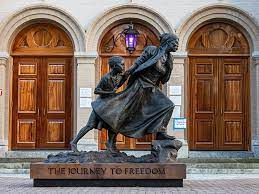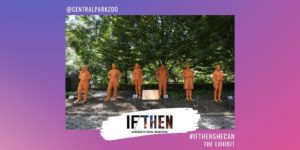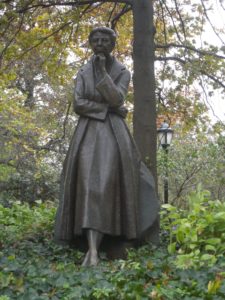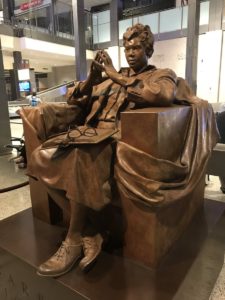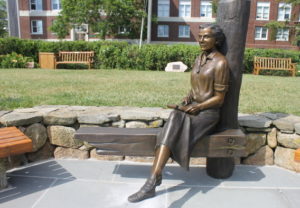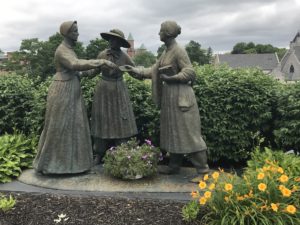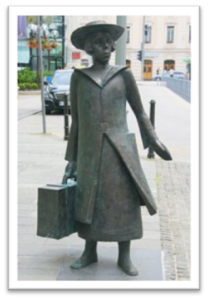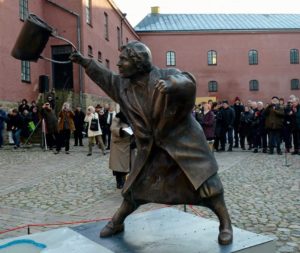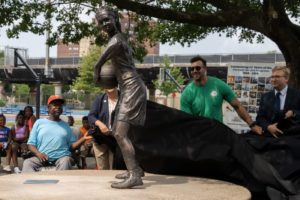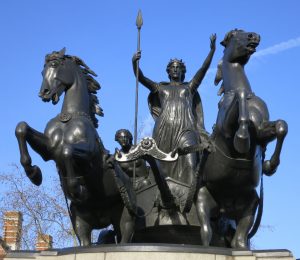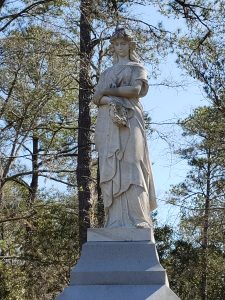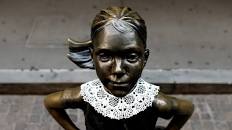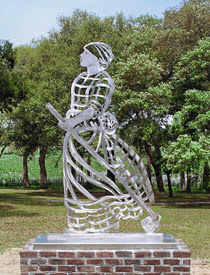NEVER BE AFRAID TO ROCK THE BOAT (1920-2013)
A statue of Elaine Morgan, a Welsh woman renowned in the fields of playwrighting, evolutionary anthropology and feminism, was recently unveiled in the south of Wales. This unveiling caught my attention because I will soon be visiting England, Scotland and Wales at the end of August and was on the lookout for intriguing women who have been made immortal by way of bronze, stone or metal. What’s interesting about this statue, sculptured by Emma Rodgers, is that it contains a QR code that can be activated by a cell phone. that will take you on a tour of her life. Ms. Morgan is part of series of statues that will be erected in five different regions of Wales. The first statue was of Betty Campbell, a prominent black headteacher, that was erected in Cardiff. Three more statues are expected.
Helen Molyneux, founder of Monumental Women Welsh Women, has this to say about Ms. Morgan: “Elaine has been called a campaigner of women’s equality but secretly I think she believed in women’s superiority. ” If you watch her Ted Talk, you’ll find out that she was a proponent of the controversial “aquatic ape evolutionary” theory. It blew my mind!
A graduate of Oxford, Elaine went on to have a career in screening and television. She is best known for the 1979 series “How Green Was My Valley.” In her controversial book, “The Descent of Women” she challenged the accepted theories of human evolution citing that females are just as vital as men in the evolution of mankind.
Please, take a moment to find her Ted Talk online. She is passionate, humorous and nothing like the ‘fringe lunatic” some academics want to pigeon-hole her into. I’ve never met Ms. Morgan but from what I’ve learned about her. the statue is not only a great likeness but it captures her in mid-thought; pen to mouth, covered in papers, as she searches for answers to the big questions.
I was quite pleased to watch her unveiling on YouTube. It was so nice to watch her grown sons publicly partake in honoring their mother. I only hope one day my sons can be as proud of me as they were of her. I also want to give Wales a big shout out. Not only have they stepped up to the idea of dotting the world with monuments of the matriarchy, they’ve done so by honoring a woman that “didn’t go quietly into that dark night. She raged”. Elaine Morgan wasn’t afraid to rock the boat or go against the grain. How many of us can say the same thing?
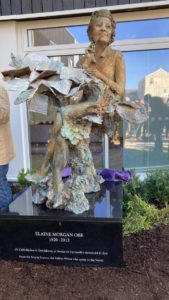
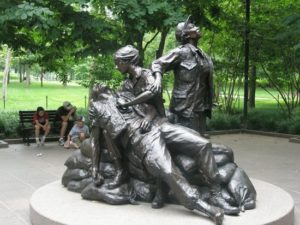
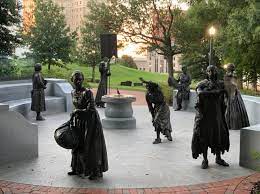
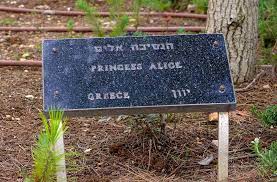
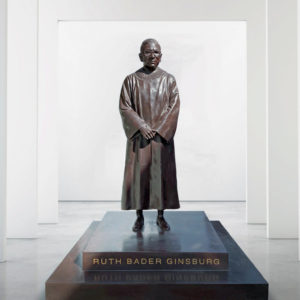
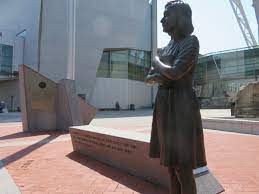
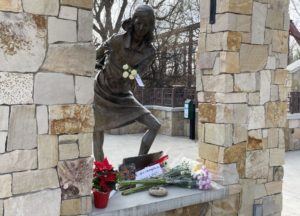
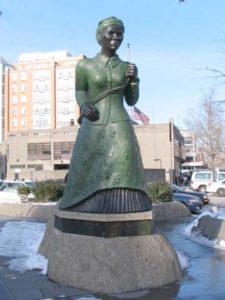 “
“ 